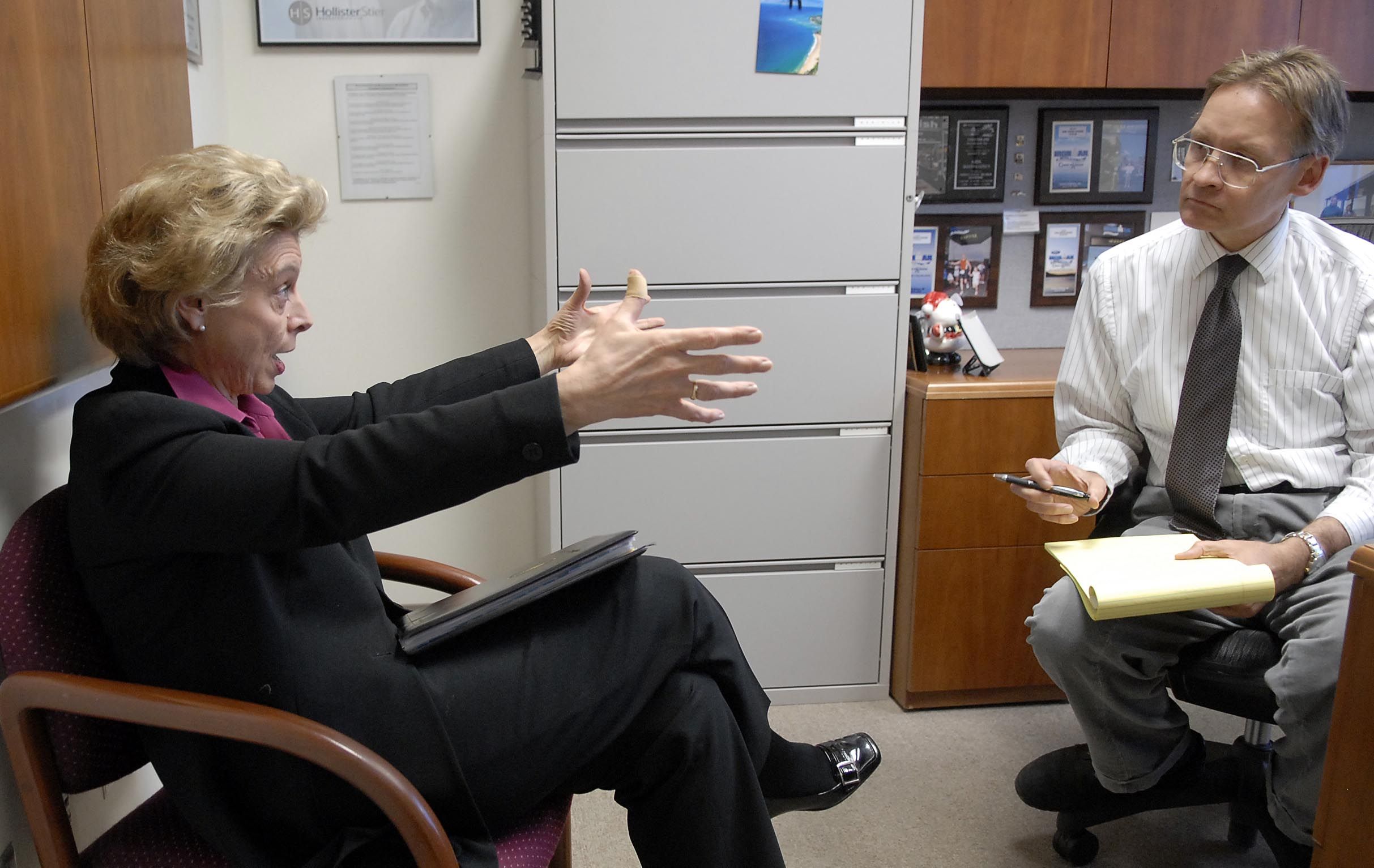Levy swap for school pay: Revenue neutral or big tax hike?
OLYMPIA – A proposed change in the way school districts levy property taxes and help pay their teachers was described by Republican supporters as “revenue neutral” when introduced this week.
But Democratic opponents counter it’s really a massive property tax on some residents, and a tax break for others. In 2019, property owners in school districts that hold more than 60 percent of the state's residents – about 4 million people – would pay higher property taxes in a “swap” between state and local property taxes.
“This would be the biggest property tax increase in state history,” said Sen. Kevin Ranker, D-Orcas Island, adding that the latest estimates show residents facing the biggest jump in their property taxes would be in the Puget Sound region, while some getting the biggest break would be in Eastern Washington and other rural parts of the state.
Most property owners in Spokane-area school districts would see a drop in their local property taxes over the four years needed to phase in the changes, although the amounts vary because of significant differences in current school district levies and the complicated laws that govern them.
Property taxes in Spokane School District, for example, would go down most years between 2018 and 2021 – as much as $1.80 per $1,000 of assessed value in 2021 – but up by .01 per $1,000 in 2019.
Ranker and other Senate Democrats have a competing plan designed to address the same problem of a system the state Supreme Court says is unconstitutional: using local tax money to pay for a basic part of public education, the salary of classroom teachers. Their solution is a tax increase, plain and simple: a capital gains tax on any resident who collects more than $250,000 a year on investment earnings. Money raised by that tax would be used to replace the money local districts now contribute to teacher salaries. That amount varies from district to district, but the amount a district receives from the state’s capital gains tax they would lower the amount they could collect from local taxpayers, so everyone would get a property tax reduction and only about 7,500 residents would pay the capital gains tax.
Sen. Bruce Dammeier, of Puyallup, some other Senate Republicans argue the state doesn’t need a new tax because there’s enough tax money being collected right now. The problem, they say, is some of it is being collected illegally by local districts because the state hasn’t given them enough money.
“This has been happening for 30 years, complicitly,” Dammeier said Friday at a Senate Ways and Means Committee hearing to compare the two proposals.
As part of its 2012 ruling that the state must do more to meet its constitutional mandate to provide adequate education for Washington students, the state Supreme Court has ordered the Legislature to come up with a plan this year to replace the portion of teacher salaries covered local school district money. It doesn’t have to happen all at once, but the court wants the Legislature to agree to a road map out of that unconstitutional arrangement.
Dammeier describes his proposal as “revenue neutral, on the macro level” – that is, the total amount collected in property taxes statewide wouldn’t change. But he acknowledged the amount collected from district to district would change, so some taxpayers would pay more and others less, and rates would change from year to year as the existing percentage cap on the amount a district can raise their levy expires and local district levies are ratcheted down to a new limit of $1.25 per $1,000. It is, he said, “very complex interplay.”
A look at how the plan would affect some of the state’s 295 school districts shows how complex:
Central Valley School District residents would get a 44 cents per $1,000 reduction in 2019 and a $1.39 per 1,000 reduction in 2021.
East Valley School District residents would get a 34 cents increase in 2019 and a $1.53 reduction in 2021
Mead School District residents would get a 4 cent increase in 2019 and a $1.76 reduction in 2021
West Valley School District would get an 11 cent decrease in 2019 and a $2.04 decrease in 2021
Orchard Prairie School District would get a $1.38 increase in 2019 and a $1.15 increase in 2021Multiplying a levy rate by the value of the property produces the tax, so a 50 cent per $1,000 levy on a house worth $250,00 means the tax is $125.
Ranker’s point about the change hitting Puget Sound communities hardest was borne out in part by figures released by nonpartisan budget staff.
Seattle School District residents’ levy rates would go up $1.37 in 2019 and $1.13 in 2021 as a result of the swap
Bellevue School District residents’ rates would go up $1.43 in 2019 and $1.19 in 2021
Bellingham School District residents rates would go up 39 cents in 2019 and 13 cents in 2021
Tacoma School District residents’ rates, however, would go down 65 cents in 2019 and down $1.92 in 2021.A spread sheet with the changes for all 295 school districts can be found below.
The goal of any kind of swap between state and local levy authority should be revenue neutral for the individual taxpayers, said Sen. Andy Billig, D-Spokane: “That’s the Holy Grail of revenue neutral.”
Sen. Christine Rolfes, D-Bainbridge Island, who has legislation on teacher pay that is tied to the capital gains tax proposal, agreed. “I’ve been trying for months to get to the Holy Grail. This is not the Holy Grail.”
It’s also not the last word, Dammeier said. Another bill is expected on the topic on Monday.
